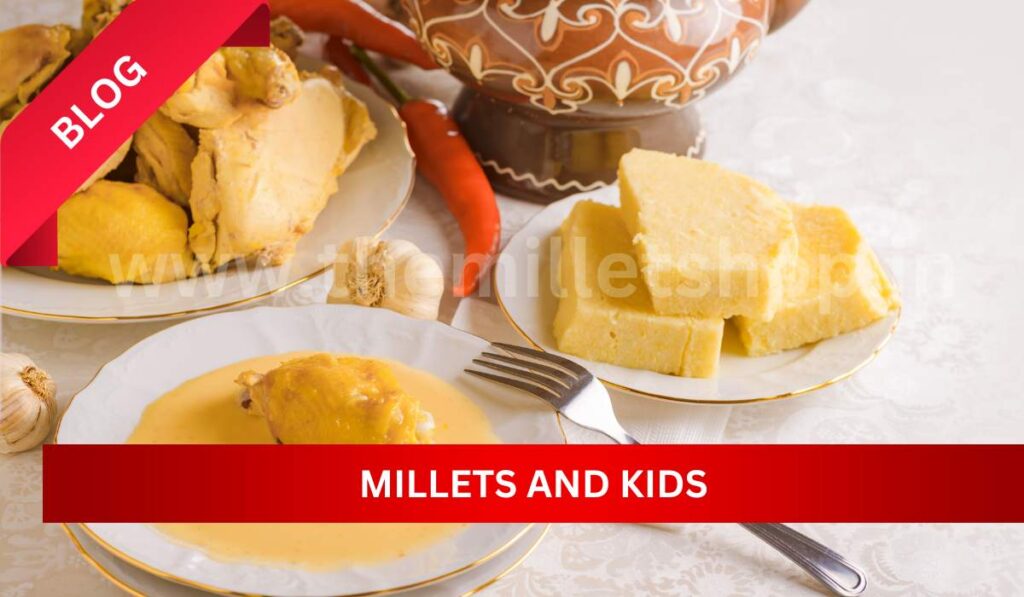Introduction: In today’s fast-paced world, ensuring that children receive adequate nutrition is more important than ever. As parents and caregivers, we strive to provide our kids with wholesome foods that support their growth, development, and overall well-being. Enter millets—the ancient grains that are making a modern comeback as nutritional powerhouses. In this blog post, we’ll explore the concept of millets and kids, highlighting the numerous benefits of incorporating these nutrient-rich grains into children’s diets.
- Nutritional Benefits of Millets for Kids: Millets are packed with essential nutrients that are vital for children’s growth and development. From protein and fiber to vitamins and minerals, millets offer a well-rounded nutritional profile that supports overall health. Unlike refined grains, which are often stripped of their nutrients during processing, millets retain their natural goodness, making them an ideal choice for growing bodies and minds.
- Supporting Healthy Growth and Development: The nutrients found in millets play key roles in supporting various aspects of children’s growth and development. Protein is essential for building strong muscles and tissues, while fiber aids in digestion and promotes a healthy gut. Additionally, millets are rich in vitamins and minerals like iron, calcium, and B vitamins, which are crucial for bone health, cognitive function, and immune system support.
- Managing Childhood Obesity and Diabetes: As childhood obesity rates continue to rise, there is a growing need for nutritious, low-calorie foods that can help children maintain a healthy weight. Millets fit the bill perfectly, thanks to their high fiber content and low glycemic index. By incorporating millets into their diets, children can feel fuller for longer periods, reducing the likelihood of overeating and weight gain. Additionally, the slow-release carbohydrates found in millets help stabilize blood sugar levels, making them an excellent choice for children at risk of diabetes.
- Introducing Millets into Kids’ Meals: Getting kids to eat healthy foods can sometimes be a challenge, but with a little creativity, millets can become a delicious and nutritious addition to their meals. Start by introducing millet-based dishes in familiar forms, such as millet porridge for breakfast or millet muffins for snacks. As they become accustomed to the taste and texture of millets, gradually incorporate them into other meals like soups, salads, and stir-fries.
- Educating Kids About Millets: In addition to incorporating millets into their diets, it’s important to educate kids about the nutritional benefits of these ancient grains. Get them involved in meal planning and preparation, and teach them about where millets come from and how they’re grown. By fostering a positive relationship with food from an early age, you can instill lifelong healthy eating habits that will benefit them well into adulthood.
Conclusion: Millets are not just grains—they’re nutritional powerhouses that have the potential to transform children’s diets and improve their health outcomes. By incorporating millets into kids’ meals and educating them about the importance of nutritious eating, we can nourish their bodies and minds, setting them up for a lifetime of wellness and vitality.

